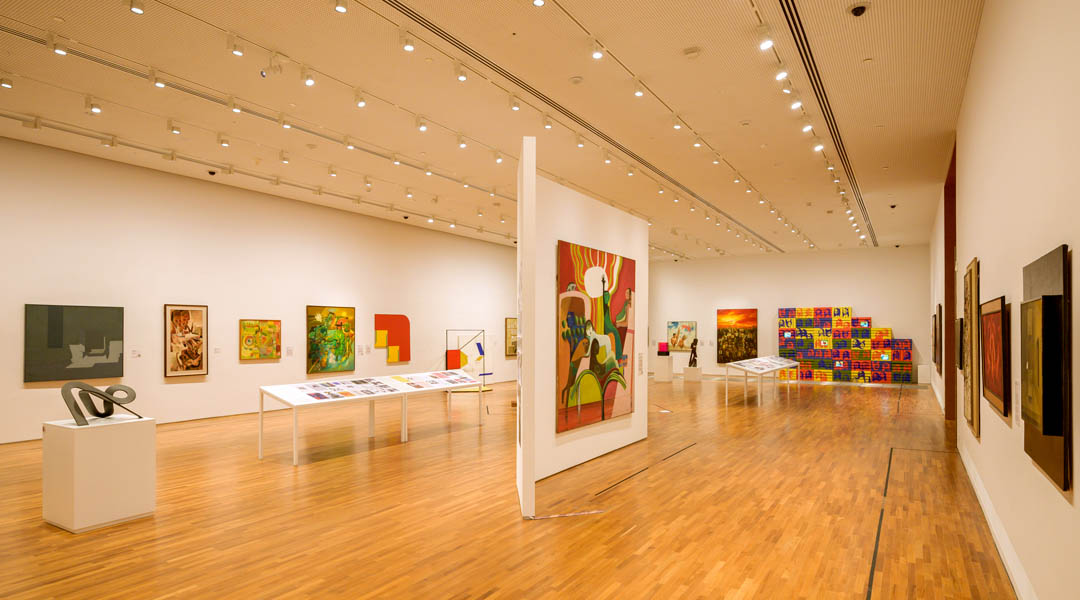
National Gallery Singapore examines art and architecture in Singapore, Bangkok, Manila
The late 1960s to late 1980s was a period of rapid social and economic change in Southeast Asia. The logic of developmentalism, which linked economic growth to massive state-led infrastructure projects, transformed cities like Singapore, Bangkok, and Manila into modern metropolises. Developmentalism spurred critical responses by artists and architects alike, who offered varying perspectives towards this new vision of modern urban life. These perspectives are the focus of the latest exhibition by National Gallery Singapore: Suddenly Turning Visible: Art and Architecture in Southeast Asia (1969–1989), which runs from 19 November 2019 to 15 March 2020.
“Suddenly Turning Visible” references a phrase coined by Filipino artist Raymundo Albano to describe the transformation of Manila’s urban landscape as a tangible manifestation of the city’s aspirations. It is an apt description of the significant shift in the history of art in Southeast Asia, which arose in response to this development, namely, interdisciplinary, experimental, and conceptual art. The exhibition explores this shift through a comparative survey of three influential art institutions—Alpha Gallery (Singapore, est. 1971), Cultural Center of the Philippines (CCP) (Manila, est. 1969), and Bhirasri Institute of Modern Art (BIMA) (Bangkok, est. 1974) —and the artistic practices that they supported and generated.
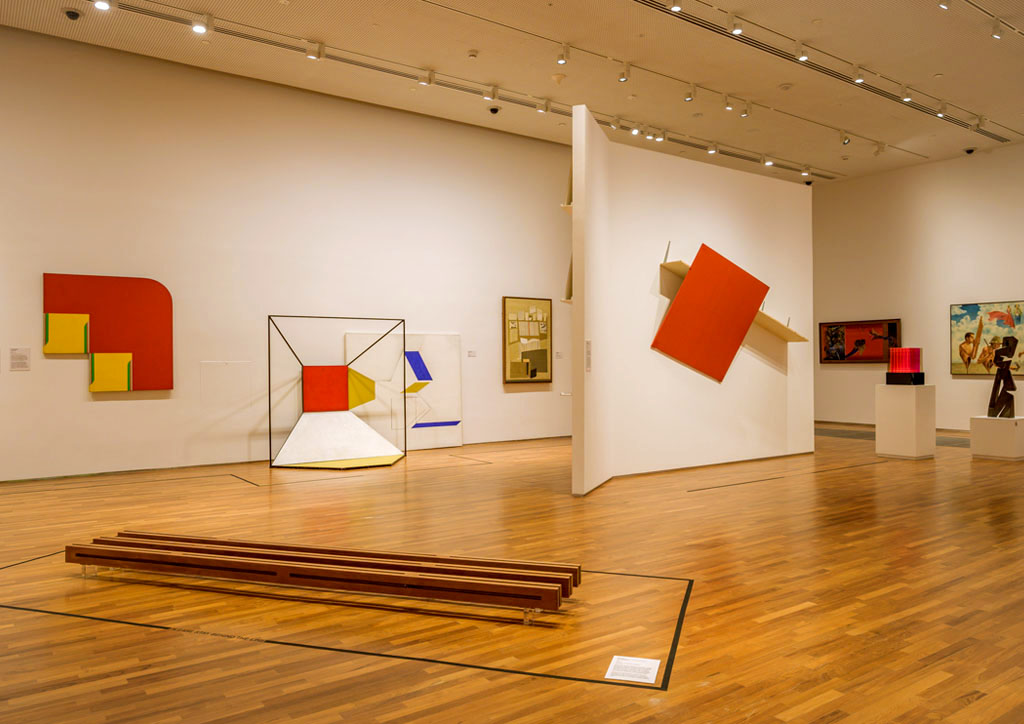
READ MORE: Filipino Form and Substance
National Gallery Singapore Director Eugene Tan says, “Suddenly Turning Visible presents critical insights on Southeast Asia through the eyes of artists during a period of significant ideological and geopolitical change in terms of discourse and action. Particularly, the exhibition examined art histories beyond national boundaries and measured contributions made by Southeast Asian practitioners to global debates on conceptualism. This spirit of experimentation, innovation, and disruption still resonates today, and should be uncovered by a wider audience.”
Architects with an affinity for art
The exhibition opens with a spotlight on the architects behind the three institutions that embodied the desire for progress: Leandro V. Locsin, the architect of the CCP; Mom Luang Tridhosyuth Devakul, who designed BIMA; and Lim Chong Keat, co-founder of Alpha Gallery and architect of the Singapore Conference Hall and Trade Union House.

In designing these purpose-built art spaces, these three architects were informed by international design movements such as Brutalism and the Bauhaus, which expressed the values of democracy, equality, and progress promoted by the new social order. The architects integrated art and architecture by inviting local artists to create works for their buildings. Lim Chong Keat, for example, commissioned Khoo Sui Hoe to create a painting that would welcome audiences into the Singapore Conference Hall and Trade Union House. The resulting work was Children of the Sun, a monumental 2.4m-tall painting that demonstrates Khoo Sui Hoe’s dynamic figurative style during the early years of his practice. This commission would mark one of the earliest instances in Singapore where art was integrated directly into the design of a building, blazing the trail for future generations of local architects who continue to incorporate art within their work today. Khoo Sui Hoe’s Children of the Sun and Filipino artist Hernando Ocampo’s Genesis, woven into an intricately patterned curtain for the CCP’s Main Theatre, exemplify the close relationship between art and architecture that continues to be relevant in the present day.
READ MORE: Must we pursue Iconism?

To bring the work of these three architects to life, Singapore artist Michael Lee has been commissioned to create new sculptural models of the CCP, BIMA, and the Singapore Conference Hall, which are accompanied by views of their current sites via Google Earth Flythrough.
Experimentation and critical responses
The period saw artists freely reinventing international art movements such as abstraction, realism, and conceptualism while creating a dialogue with folk and vernacular traditions from across Southeast Asia. Suddenly Turning Visible presents over 50 artworks across the Ngee Ann Kongsi and Koh Seow Chuan Concourse Galleries in the basement of National Gallery Singapore.
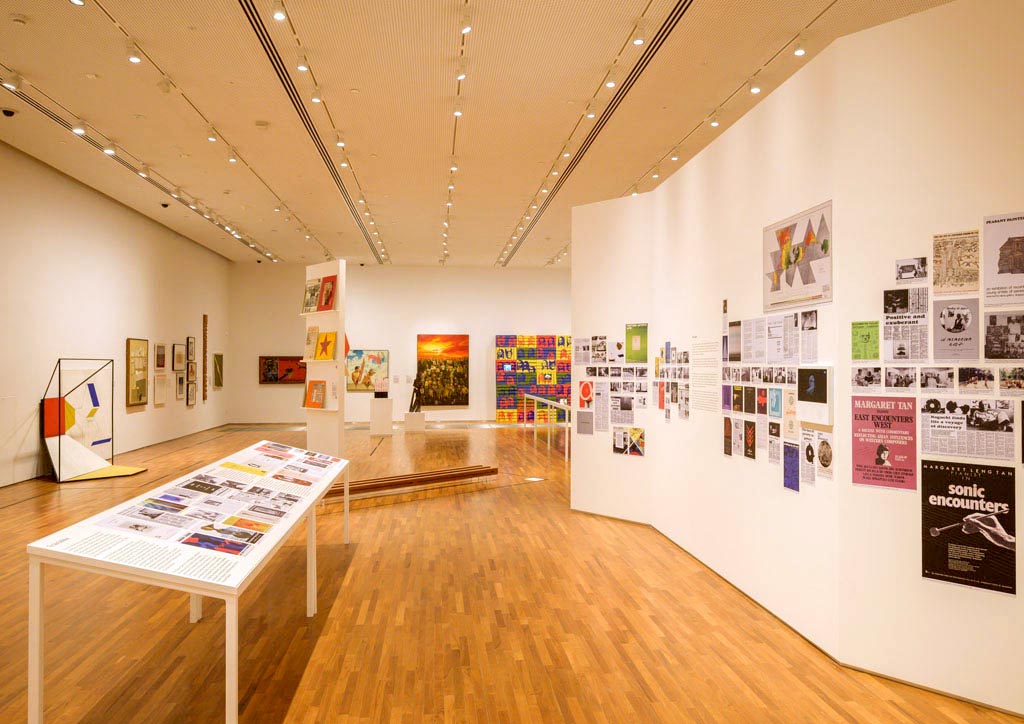
The artworks at the Ngee Ann Kongsi Concourse Gallery highlight the evolution in form and medium of art. They are complemented by a rich selection of archival documents, photographs, and publications, illustrating the pioneering role of Alpha Gallery, CCP, and BIMA as vital platforms for artistic expression and discourse.
READ MORE: The Manila street art scene from sidewalks to galleries
Notable works in this section include Thai artist Panya Vijinthanasarn’s Struggle incorporating Buddhist iconography traditionally used in Thai mural painting with abstract geometric forms; Filipino artist David Medalla’s Kumbum series of collaged placards documenting the social upheaval and economic inequality of the post-War period; and the mural-sized painting Flight to Freedom by Filipino artist Pacita Abad illustrating the plight of Cambodian refugees escaping into Thailand during the Vietnamese intervention in 1979.
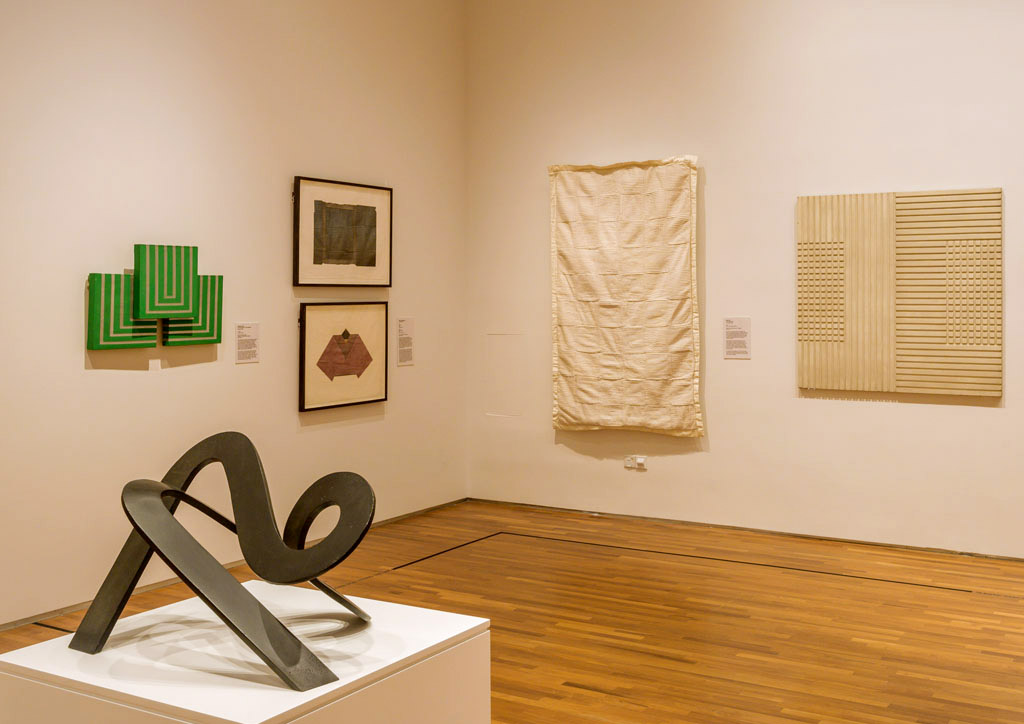
Suddenly Turning Visible also features several significant works that have been reconstructed and restaged, especially for the exhibition. The large-scale performance Cassettes 100 by Filipino composer and ethnomusicologist José Maceda will be staged in Singapore for the first time in a one-time-only performance at the Gallery on 23 November at 3 pm. Originally presented at the CCP in 1971, it comprises 100 participants moving through the space while playing recordings of indigenous Filipino instruments and voices from cassette players.
Apart from restaging Cassettes 100, the exhibition also showcases four reconstructed works in the Koh Seow Chuan Concourse Gallery that shed light on social concerns in each city during this period.
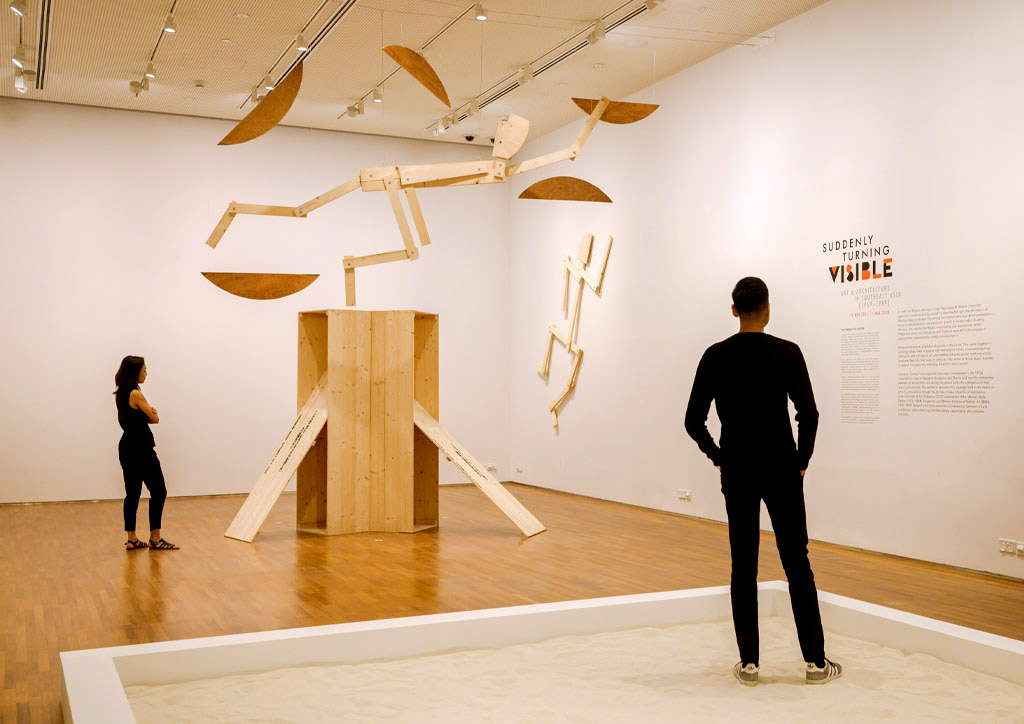
READ MORE: PH hosts exhibition of contemporary art in Southeast Asia
Former CCP director Raymundo Albano’s Step on the Sand and Make Footprints, first presented at the 1964 Tokyo Print Biennale, invites visitors to step into the artwork and leave their footprints in the sand, referencing the abundant sand found around the city due to construction work. Alongside Albano’s iconic work are two installations previously showcased at BIMA: Sickness Age by Vasan Sitthiket, and Kamol Phaosavasdi’s provocative Song for the Dead Art Exhibition. The former comprises three coffins bearing the names of Thatcher, Reagan, and Gorbachev, who were at the center of global geopolitics at the time. The latter features a wall filled with pages torn from postmodern manifestos and essays, challenging the dominance of painting as the preferred artistic medium in Thailand.
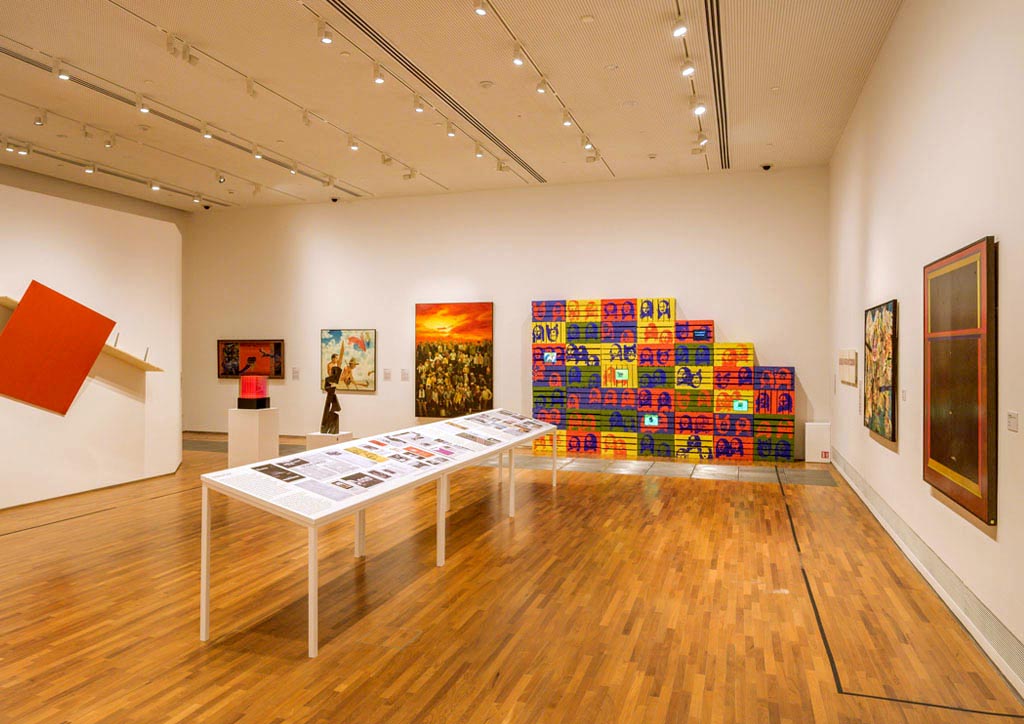
The final reconstructed work is the State of the Nation by Manila-based social realist collective KAISAHAN. This banner-sized painting illustrates the social injustices and human suffering arising from the declaration of martial law in the Philippines by Ferdinand Marcos. The work recalls the murals and posters that the group created for the protest movement in Manila during this turbulent period.
Suddenly Turning Visible is curated by Gallery curators Cheng Jia Yun, Joleen Loh, Seng Yu Jin, and Shabbir Hussain Mustafa. For more information about the exhibition, please visit: www.nationalgallery.sg/suddenlyturningvisible
Edits were made for publication online.
images courtesy of the National Gallery Singapore
READ MORE: Six offbeat architecture destinations to visit in Jakarta and Singapore


